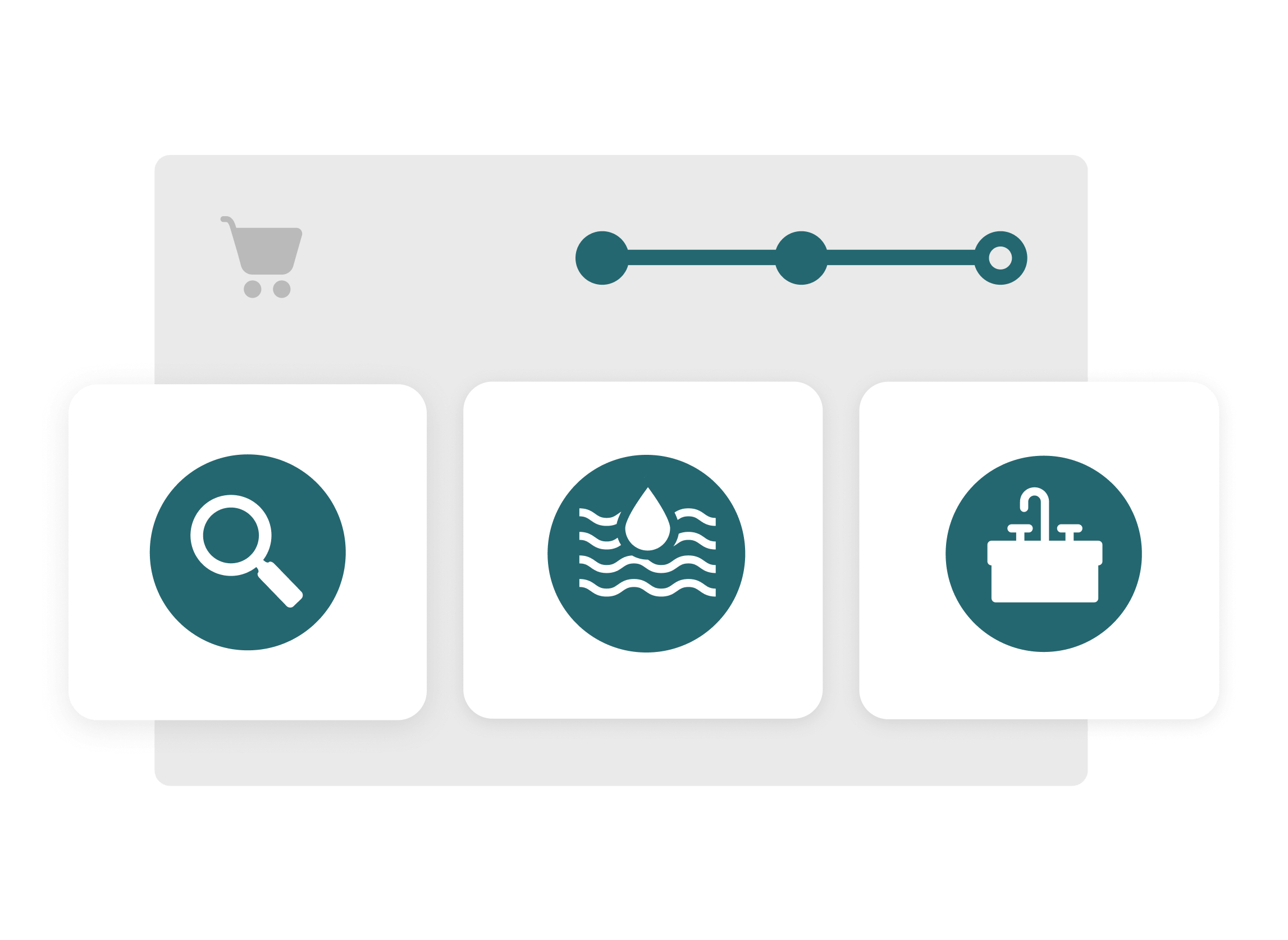How Reverse Osmosis Water Filtration Works

Want to know how reverse osmosis water filtration works? Consider the following lesson that’s often taught in middle school science classrooms.
Pretend you’re looking in a cup. Inside, there is a thin piece of waterproof clothing for dividing the cup into two separate, yet equal sections. Call this the semipermeable membrane. Now, imagine filling one half of the cup with salt water and the other half with fresh water.
The water level on the saltwater side will rise as fresh water moves through the membrane toward the salt water, which is highly concentrated. This movement is an attempt by the water to have both sides of the cup contain the same ratio of salt. The water in the cup is finding its equilibrium. This natural process is called osmosis.
Pressure is added to the saltwater side to reverse this natural process and create more fresh water. This is referred to as reverse osmosis. In household applications, common water contaminants act as the salt in this example. That is how reverse osmosis water filtration works in brief.
What Is Reverse Osmosis Filtration?
Reverse osmosis happens when pressure is used on a highly concentrated solution—contaminated water—forcing the solution through a membrane to a lower-concentrated solution—uncontaminated water.
This leaves you with two solutions of water: one that is filled with contaminants that will wash away down the drain, the other is clean water that’s ready for consumption.
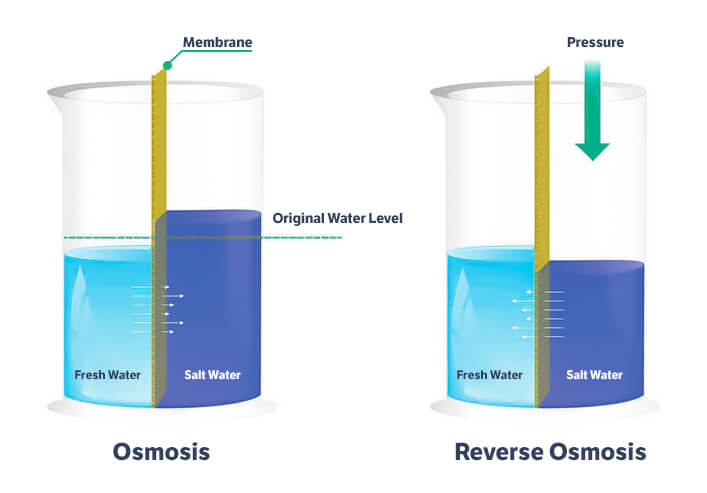
The key to effective reverse osmosis filtration is the semipermeable membrane, which removes inorganic solids such as salts from water, in addition to lead and other harmful chemicals.
Curious about reverse osmosis systems?
See EcoPureHome’s selection of powerful reverse osmosis systems and discover a perfect solution for your home’s unique water needs.
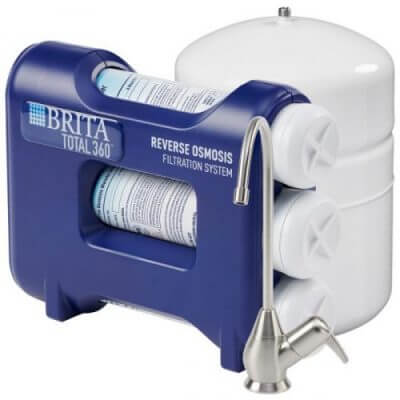
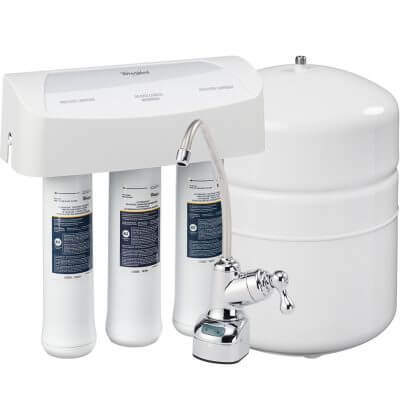
6 Steps to the Reverse Osmosis Water Filtration Process
- The water from your city’s municipal center, or your private well, enters your home
- Water enters the reverse osmosis (RO) system’s activated carbon pre-filter to reduce chlorine taste and odor and particulates that may damage the membrane
- Pre-filtered water moves to the RO membrane where total dissolved solids and other contaminants are drained away
- The filtered water moves to the storage tank
- Once the dedicated faucet is activated, water from the storage tank flows through a final activated carbon post-filter where any remaining undesirable tastes and odors are reduced
- RO filtered water flows from the dedicated faucet
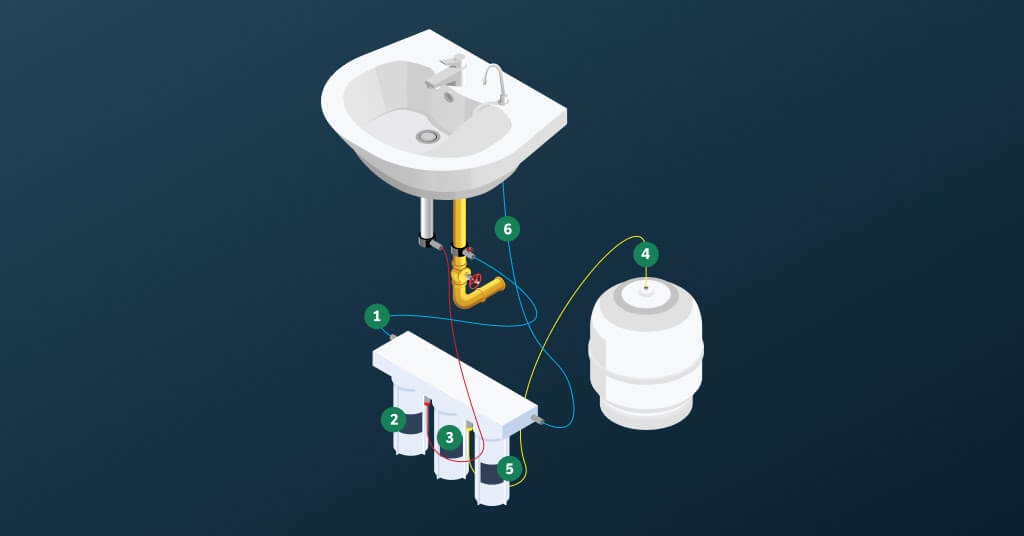
How Is Reverse Osmosis Different From Traditional Filtration?
How reverse osmosis filtration differs from traditional filtration techniques is the presence and power of the membrane. Unlike traditional filters, the membrane of an RO system allows for a more thorough level of filtration where it reduces both visible and invisible contaminants from your water.
The micron rating scale tells us how much more effective RO filtration systems are compared to traditional forms of water filtration.
What Is a Micron Rating?
The micron rating tells us the average size of the openings in a filter. The higher the micron rating, the larger the substance that can pass through the filter.
A micron is defined as one-millionth of a meter and is a popular unit of measurement in tech and science fields. Microns are so tiny that the naked eye cannot see an object unless it’s at least 40 microns (a human hair, for example, is typically 70-80 microns). RO systems reduce contaminants as small as .001 microns. Carbon filters reduce contaminants as small as .5 microns.
What Do RO Filters Remove?
RO filters reduce a number of contaminants that can and cannot be seen with the naked eye. The following is what’s reduced when passed through the reverse osmosis filtration process:
- Chlorine
- Sediment (Dirt, Sand, Silt, etc.)
- Microbial Cysts
- Lead
- Chemicals
- Dissolved Solids
- Volatile Organic Compounds (VOCs)*
- PFAS (“Forever Chemicals”) which include Perfluorooctanoic acid (PFOA)*
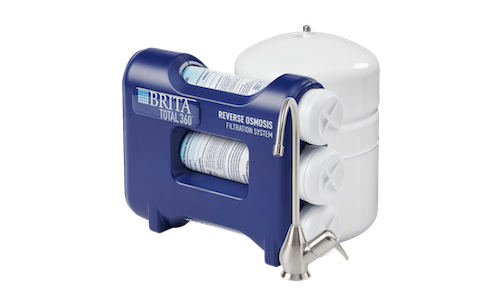
*Applicable to the Brita Total 360 Reverse Osmosis Drinking Water Filtration System
Experience the difference a reverse osmosis system can make.
Get bottled water quality right from your tap with a reverse osmosis system. Choose from two leading brand names and get started.


What Are the Benefits of Reverse Osmosis Filtration?
1. Flexibility
RO systems provide safer drinking water no matter where your water comes from. Nearly everyone receives water in one of two ways: from a private well or municipal center. Reverse osmosis filtration systems are created to extract dissolved solids that may be present in your water supply. It also reduces excess chemicals that are used to treat water at municipal centers.
2. Convenience
Installing a reverse osmosis filtration system can be a do-it-yourself project. The systems are slim enough to fit right under your sink. They also take up little space on the counter with a space-saving faucet design.
RO systems are also convenient because they require minimal maintenance. They have long-lasting filters, which are simple to replace, and there’s no need to shut off your water supply when swapping them out.
3. Improves Diet
One of the exclusive benefits tied to reverse osmosis filtration systems is that it allows individuals on sodium-restricted diets to enjoy tap water. Not only does it produce water that’s safer to drink, but it’s also safer to use while in the kitchen preparing food, cleaning vegetables and boiling water.
Overall, installing a RO system in your home will provide you with having the quality of bottled water, without the expensive price tag or waste of plastic bottles.
The Reverse Osmosis Installation Process
How to Change a Reverse Osmosis Filter
Performing a reverse osmosis filter change is quick, mess-free and does not require you to turn off the water supply. Here’s how you change a reverse osmosis filter:
- To remove filter, twist filter counterclockwise a quarter turn
- Once the filter is loose, pull it out and discard
- Twist new filter clockwise into the correct slot (marked on the system)
- Replace the faucet battery (included with filter purchase) to reset the indicator light for the next filter change (included on select models)
- Run the faucet to “purge” the new filters

Filters and membranes are easily replaceable. Filters last up to six months and membranes are meant to be used for two to three years. However, the longevity of both the filters and membrane depend on the quality of the water coming from your home’s source and the volume of water used.
A reverse osmosis filtration system can reduce the amount of contaminants in your water supply while providing your family with cleaner drinking water for years to come—allowing you to avoid bottled water, its expensive price tag and associated plastic waste.
Not Sure if Reverse Osmosis is Right For You? Try EcoPureHome’s Interactive Shopping Guide.
EcoPureHome’s guided shopping experience can help you find the right solution for your home’s unique water needs.
Get Started